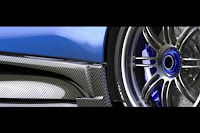
A Fiat lançou a linha Idea 2011, que ganhou um novo visual externo e um interior remodelado.
A linha 2011 do Idea tem três opções de motor a 1.4, 1.6 16V E.torQ e 1.8 16V E.torQ e quatro versões a Attractive, Essence, Sporting e Adventure e também as versões Dualogic.
Nos itens de série a Fiat Idea Attractive. A versão de entrada da nova gama possui as mesmas características e qualidades da atual versão ELX 1.4. Além do preço atraente, traz um bom nível de itens de série. Entre eles, direção hidráulica, vidros elétricos dianteiros, travas elétricas, computador de bordo, volante e banco do motorista com regulagem de altura, Follow me home, três encostos de cabeça no banco traseiro, banco traseiro bipartido, comando elétrico de abertura do porta-malas, console no teto, lanternas traseiras com iluminação a LED, retrovisores externos com luzes indicadoras de direção, spoiler, luzes de leitura dianteira e traseira e chave canivete com telecomando.
Já na Idea Adventure. Com a mesma oferta de equipamentos – acrescida de airbags dianteiros, freios com ABS e faróis de profundidade – e motorização que a versão Sporting, ela apresenta como destaques o acabamento externo e interno característicos da linha Adventure. Ou seja, barras exclusivas no teto, bússola e inclinômetro, grade frontal cromada com inscrição Adventure, estepe fixado na porta traseira (com trava antifurto), protetor de cárter, novas rodas com pneus de uso misto 205/70 R15, suspensão elevada, porta-objetos no assoalho do porta-malas e todos os detalhes estéticos que distinguem a versão Adventure. O Locker, passa a fazer parte da lista de opcionais do novo Idea Adventure.
Idea Essence. Incorpora o novo motor 1.6 16V E-torQ, acoplado a um câmbio mecânico de cinco marchas ou ao câmbio Dualogic® Automático. Traz os mesmos equipamentos e nível de acabamento da versão Attractive, mas oferece alguns itens opcionais a mais: bancos em couro, apóia-braço para o motorista, banco dianteiro do passageiro dobrável para ampliar o espaço para carga, airbags laterais dianteiros, teto solar Skydome, sensores crepuscular e de chuva, retrovisor interno eletrocrômico e subwoofer.
A Idea Sporting. Trata-se de uma nova versão para o modelo, bastante diferenciada em termos de acabamento interno, visual externo e nível de equipamentos. As versões Sporting vêm com opção de câmbio mecânico ou Dualogic e têm o novo motor 1.8 16V E.torQ . Seus itens de série incluem todos os presentes na versão Attractive, mais ar-condicionado, computador de bordo B, faróis de neblina, rádio CD com MP3, rodas em liga-leve aro 16” (inclusive o estepe), retrovisores externos com acionamento elétrico e apóia-braço central para o motorista.
Confira as versões e Preços da linha Idea 2011:Attractive1.4 8VR$ 43.590
Essence1.6 16V E.torQR$ 45.610
Essence Dualogic1.6 16V E.torQR$ 47.720
Sporting1.8 16V E.torQR$ 54.280
Sporting Dualogic1.8 16V E.torQR$ 56.390
Adventure1.8 16V E.torQR$ 56.900
Adventure Dualogic1.8 16V E.torQR$ 59.010
















































